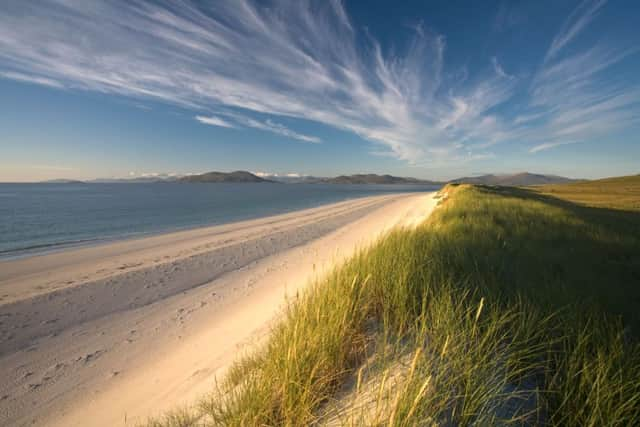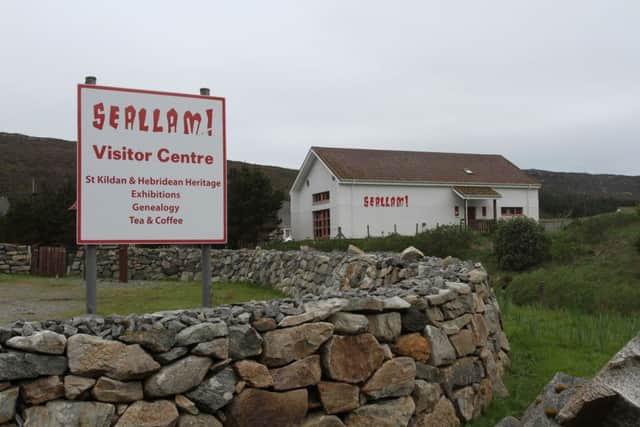Travel: William MacGillivray and the Isle of Harris


Monday 10th November, 1817
Today I rose early, drank warm milk at the gate as yesterday – then walked along the shore of Tastir, over Traigh-na-clibhadh, and along the rocks to the upper end of Moll-na-h-Uidhadh, then crossed Ui to the great sand, and returned along its margin. In this course the birds seen were the Starling, among the cattle and in the corn-yard, the Shag on the coast, the Common Gull in South town and on Ui, the Great Black-backed Gull on Moll-na-h’Ui, the Curlew on Ui in large flocks, the Wren on the marsh dyke of Ui, the Meadow Pipit on the shore, the Hooded Crow on Ui, the Raven on Fastir, and the Ringed Plover on the sands – I have determined to describe all the birds found in Harris & shall fall to work immediately.
So runs an entry from William MacGillivray’s Hebridean journal of 1817-18. Twenty-one years old, just out of university, fidgety with ambition, MacGillivray has drifted back home to his uncle’s farm on Harris, the place where he was brought up from the age of three. Part travelogue, part diary, part to-do list for the future, MacGillivray’s journal is a remarkable account of a young man trying to take the measure of himself. What is he capable of? In what ways is he deficient? How can he improve on his faults? The journal is full of post-it notes (their 19th century equivalent) for self-improvement. It is an account of a person wanting to settle on a course for his life and conveys with great honesty all that is daunting and confusing about such a moment. It is an account, too, of an island community at a time of tremendous social upheaval. Above all the journal is a vivid account of the wildlife – the birds, plants and weather – of the Outer Hebrides by one of our most gifted field naturalists.


Advertisement
Hide AdBut you would be forgiven for not having heard of William MacGillivray. His achievements – his astonishing body of work – in botany, geology, especially in ornithology, have largely been forgotten. Even his gravestone in the New Calton cemetery in Edinburgh has been desecrated, its brass plaque with an engraving of a golden eagle was hacked off and stolen a few years ago.
During his life MacGillivray spent time in Harris, Edinburgh and Aberdeen. But Harris was his spiritual home. The island infuses his work and some of his best writing is on the birds – such as the sea eagle and golden eagle – he came to know so well on Harris.
So one August, deeply under MacGillivray’s spell, I travelled to Harris to pay tribute to the great naturalist’s memory, to search for his home, the farm where he was brought up and wrote his remarkable Hebridean journal.
Approach Harris from the south, from North Uist, and the beautiful island of Berneray lies in your way. The beach along Berneray’s west coast is one of the finest in the Hebrides and to walk along it is to meet only oystercatchers and the occasional hauled-up sleeping otter. You can stay at the hostel on Berneray (a restored croft house) or pitch your tent along the shore nearby and at night listen to the strange moaning sounds of seals on the rocks and islets which are scattered throughout the Sound of Harris. In the morning open your tent flaps to the spectacular jagged outline of the Cuillin ridge on Skye away to the south-east. Berneray can easily be walked around in a day. Take a picnic, then doze amongst the sand dunes overlooking the Isle of Pabbay. I especially recommend visiting the moving burial ground on the hillside at the north end of Berneray.


Coming from the north, you pass through Harris’s principal settlement, Tarbert where the ferry docks from Uig on Skye. Take the main road, the only road, south out of Tarbert but then, if you have the time, peel off to the left onto the tiny road which loops and coils as slowly as any road can down Harris’s rocky eastern coast. Stay at the Lickisto Blackhouse Camping and Yurts, a wonderful campsite where you can jump off the rocks into freezing Loch Stocanais and seals will, if you’re lucky, bob up beside you to huff and snort back at you as you flail through the freezing, crystal-clear water.
I was given directions for finding MacGillivray’s home: ‘Follow the main road past Leverburgh and take the turning on the left to Northton’, I was told. ‘But make sure you stop at the Seallam Visitor Centre first, they will be able to pinpoint the ruins of MacGillivray’s home for you.’ So I stopped at the visitor centre, a fascinating gateway and archive of everything and anything you might wish to know about the area – from its human history to natural history. I peered over an OS map with Seallam’s owner who showed me the ruin marked on the map as a ‘Sheep Dip’.
Sunday 21st September, 1817
Advertisement
Hide AdRose early, took a towel in my pocket, and went over to South town where I washed in the sea. The water felt very cold. Here I observed a flock of ducks, and an immense squadron of scarts passing from their habitacles at the west side of Bencapval to fishing stations up the sound. The gannet too was fishing. On my way home, I fell in with the cattle, and drank some warm milk – after breakfast I went over to South town in quest of flowers.
From the Temple Cafe I walked north along a track across the machair. Late spring and early summer are the best times to see this rare beautiful habitat, when the machair becomes a bright carpet of wild flowers. But even in August the lush seed-heavy grasses were pricked with yellow, white and purple flowers. The conical-shaped hill of Ceapabhal rose ahead of me. You could spend all day exploring the hill and the peninsula it dominates; the view from the summit is one of the finest in the Hebrides: the whole chain of the Uists opening up to the south and, on a clear day, St Kilda can be seen over 40 miles to the west.
Advertisement
Hide AdI turned a corner of the track and caught sight of the ruins of MacGillivray’s home sitting on the lower slopes of Ceapabhal. The great expanse of Scarista Sands stretching away to the east; beyond the sands, the Isle of Taransay and the mountains of Harris. The ruins are used as a sheep fank now, a maze of gates, walkways and holding pens littered with scraps of wool. After I had spent some time at the ruin I walked down to the sandy beaches on the western side of the machair, a walk MacGillivray describes frequently in his journal. The sea was a clear bright turquoise colour, so clear you could gauge its depth a long way out. The only thing left to do was plunge in (as MacGillivray so often did). Then yelp when the cold Atlantic water hit my skin.
• Raptor: A Journey through Birds is published by 4th Estate, £16.99. James Macdonald Lockhart is appearing at the Winter Words Festival, Pitlochry tomorrow and at the Aye Write! Festival in Glasgow on 20 March.